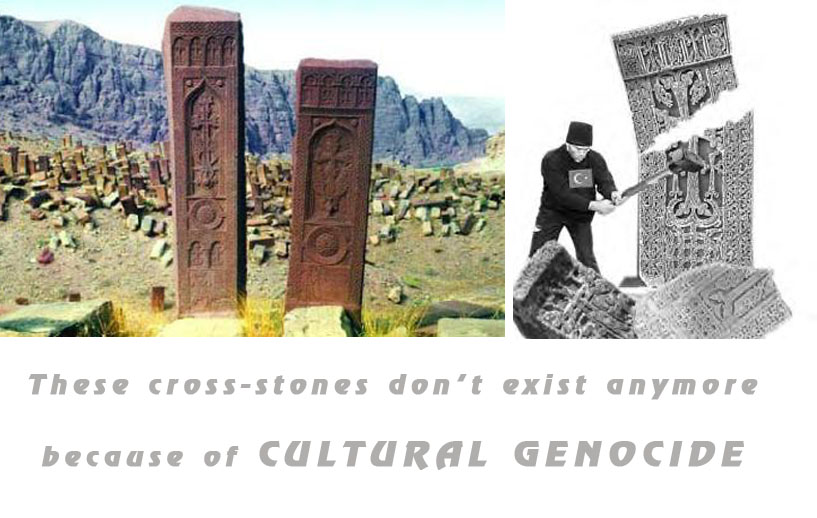| by Sarah Pickman June 30, 2006 A place of memory is wiped off the face of the Earth. |
![[image]](http://www.archaeology.org/online/features/djulfa/thumbnails/djulfa2.gif) | Khachkars of the Djulfa cemetery, c.1987 (Courtesy of Research on Armenian Architecture) |
On the banks of the River Araxes, in the remote, windswept region of Nakhichevan, is a small area of land known as Djulfa, named for the ethnic Armenian town that flourished there centuries ago. Today, Nakhichevan is an enclave of Azerbaijan. Surrounding it on three sides is Armenia, and on the fourth, across the Araxes, is Iran.
Hundreds of years ago, almost all of Djulfa's residents were forced to leave when the conquering Shah Abbas relocated them to Isfahan in Persia. But Djulfa was not left completely empty: its cemetery, said to be the largest Armenian graveyard in the world, survived. Inside it were 10,000 or so headstones, most of them the intricately carved stone slabs known as khachkars. Long after the town was emptied, the khachkars, which are unique to Armenian burials, stood like "regiments of troops drawn up in close order," according to nineteenth-century British traveler William Ouseley.
Those stone regiments are gone now; broken down, all of the headstones have either been removed from Djulfa or buried under the soil. No formal archaeological studies were ever carried out at the cemetery--the last traces of a community long gone--and its full historical significance will never be known.
![[image]](http://www.archaeology.org/online/features/djulfa/thumbnails/djulfa1.gif) | The region of Nakhichevan, situated between Armenia and Iraq. "NKR" indicates the contested region of Nagorny-Karabakh. (Courtesy of Research on Armenian Architecture) |

